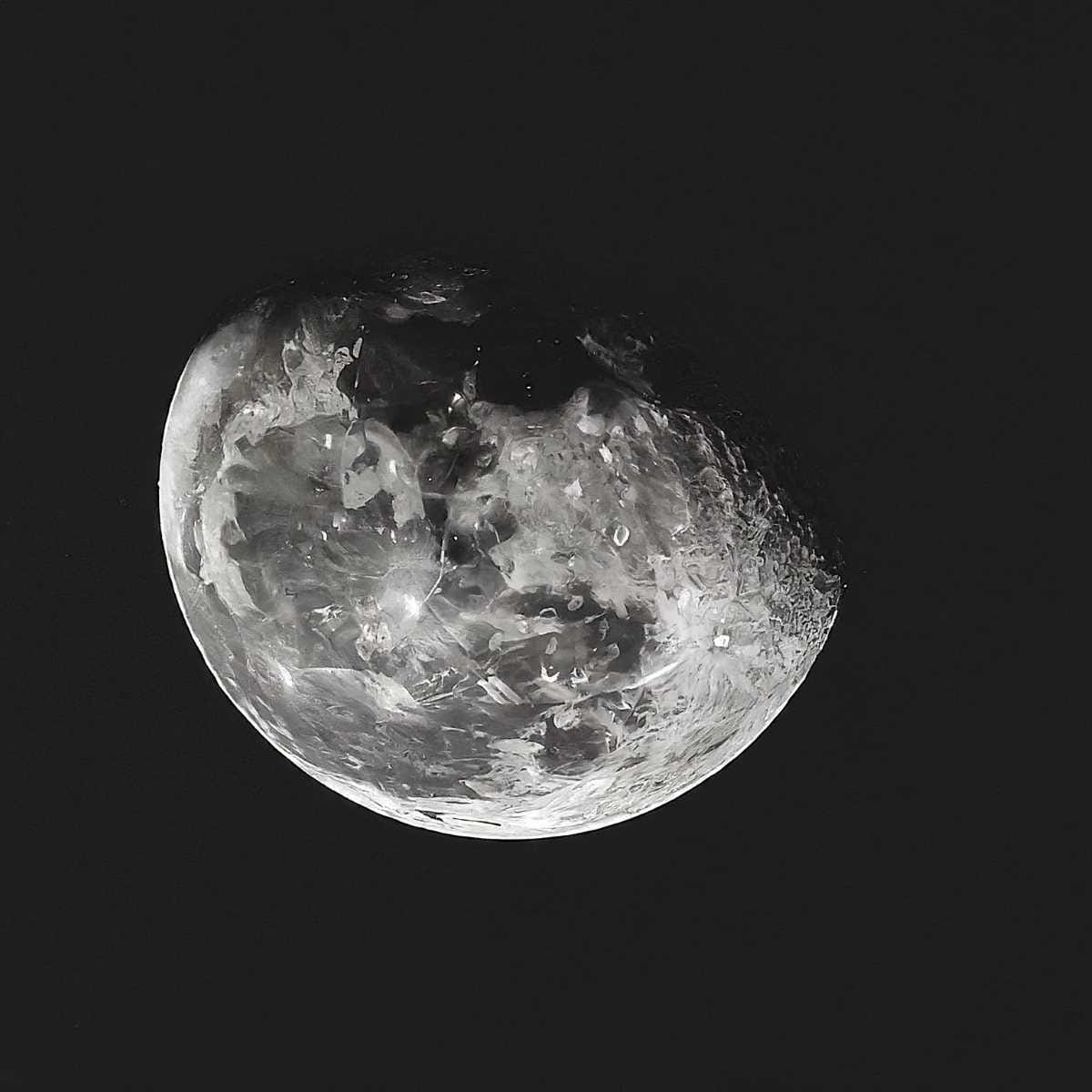Moon 2.0: The Next Chapter in Lunar Exploration
The Moon, a symbol of humanity and a potential resource, is explored in detail. Its impact on culture, history, and science is discussed, highlighting challenges and opportunities for future exploration.

The Moon, Earth's natural satellite, has been important for humanity in every sense; it is a basic, fundamental element of our civilizing process, says researcher and former director of the Institute of Astronomy (IA) of UNAM, José Franco.
So far, five countries have realized the dream of flying and reaching the brightest celestial object of the night with their space missions, which has been a source of inspiration in all the arts. "The Moon is with us, it is part of our heritage, of our culture," adds the astronomer.
The scientist believes that, due to the inhospitable conditions of the lunar environment, there are still a series of problems to be solved before it is possible to have a group of human beings "spending a long time there."
On the other hand, the next unmanned space missions could have the objective of robotic mining on asteroids and said satellite, since on our planet some minerals are scarce and necessary in the manufacture of computers, smartphones and other electronic devices; In other words, its scientific and cultural importance is added to its economic importance, underlines the doctor in Physics from the University of Wisconsin-Madison.
The Apollo 11 journey was a unique moment in history; the walk, on July 20, 1969, and the safe return of the mission “made us realize that we, as members of the human race, can achieve anything, with resources and technology, if we are prepared to combine our efforts and work together for the benefit of humanity,” said U Thant, then Secretary-General of the UN.
In addition to commemorating that anniversary, the international organization intends to celebrate on this international day the achievements of the states in the exploration of the star and to raise public awareness about its investigation and sustainable use.
From Apollo to Chang'e
The Moon lacks an atmosphere and magnetic field, which is why radiation and solar wind fall on its surface “without filters, just like cosmic rays or meteorites. Its period of revolution around the Earth is equal to its period of rotation around its own axis: one lunar day is equivalent to 28 Earth days.
The temperature on the surface can rise to more than 100 degrees Celsius during the day and drop to minus 150 at night. “The variation is so great that it is impossible for any organism to survive without adequate protection.”
Its surface is filled with dust that is the result of the impacts of meteorites that collide at high speeds, which melt a piece of the crust that rises and when it cools, it crystallizes. This material, called regolith, is too abrasive like ground glass, and can cause many problems if it reaches the lungs.
Thinking that there are bases with human beings living there for long periods of time means solving numerous problems: greenhouses for growing food or the availability of water, for example, clarifies the expert when referring to the International Moon Day, declared by the United Nations in 2021, to be celebrated on July 20.
The Apollo 11 astronauts, Neil Armstrong, Michael Collins, and Buzz Aldrin, spent a few hours on the lunar surface in 1969. The same occurred in the five subsequent voyages; that is, from the Apollo 11 to 17 missions, there were a total of six manned trips with two people going down on each occasion. Apollo 13 did not achieve the goal because it had an accident when one of the oxygen tanks leaked, and the landing and the moonwalk were aborted; they were only in orbit and returned. So, only 12 human beings have set foot on it, highlights the former general director of Science Dissemination at UNAM and former general coordinator of the Scientific and Technological Advisory Forum.
An interesting fact, Franco mentions, is that during the Apollo 8 mission, which orbited the Moon but did not land, biometric tests were performed on astronauts and the first electrocardiograms were recorded in orbit. The results were sent to Earth, and a Mexican cardiologist, Dr. Ramiro Iglesias, visiting NASA, was invited to read and diagnose the studies. “We have a Mexican pioneer in space cardiology.”
The work of sending people 384,400 kilometers away from the planet is arduous and costs too much money. That was the reason why it was decided not to continue until Apollo 20, as was the initial plan.
But in the six moon landings, great achievements were obtained, such as bringing samples and leaving scientific instruments; for example, seismographs and mirrors so that when a laser beam is sent from Earth, it can bounce back. “We know the speed of light, which is a constant in the universe, so the time of the round trip is measured and thus we know with great precision the distance between the planet and its satellite. Thanks to that, we know that it is moving away from us slowly, a few centimeters a year.”
The current development of science and technology has even allowed probes to land on the dark side of the Moon: the Chinese managed to put their autonomous robots there as a result of the Chang’e missions, the name of their goddess of the Moon.
In Mexico, the scientist believes, we have wasted great opportunities to promote space research and development. The country “had a space agency, the National Commission for Outer Space, which began in 1962 and operated until 1977, even rockets were built. Unfortunately, it was dismantled, and the experience was lost.” Decades later, attempts are being made to restart activities. Recently, UNAM made a good attempt through the Colmena project, the first Mexican mission to the Moon.

Literature, music…
On this occasion, it is pertinent to think about the meaning that this celestial body has had for humanity. It has been the “sun” of the night, even though it has no light of its own and sometimes “disappears” due to its phases. Since prehistory, it has been humanity’s clock; “it was the first to locate us in time, the first calendar.” The author emphasizes that we should celebrate the moon by admiring it.
For the author of Alunizaje, the sky is a window to the confines of the universe and to ourselves, revealing our fears, desires, emotions, and thoughts. The moon, as the natural satellite of the Earth, has been an important deity that even seemed to govern the fertility of women.
The moon has many connotations in the myths and traditions of all cultures, from the first civilizations in Mesopotamia to those of the New World, including the Toltecs, Olmecs, Mayans, Incas, and Vikings, as the author details.
The moon has also been an element of inspiration for the arts, such as music and literature. “The first lunar voyage in literature was described by the Syrian Lucian of Samosata, who lived in the second century of our era. That voyage was made by ship when, due to a storm, a whirlwind threw the ship to the Moon.”
In that epic poem Orlando furioso (by Ludovico Ariosto, published in 1532) he was able to find the sanity lost by love. These are examples of how, through literature, “we have traveled there thousands of times” and how in space travel the first stop is the Moon, adds the former president of the Mexican Academy of Sciences.
In music, it has inspired works such as the “Moonlight Sonata” by Beethoven; and even “El Gato Viudo”, where Chava Flores tells what happens “when the Moon becomes as big as a ball and lights up the alley”; or, “Los Aretes de la Luna”, a hit by Sonora Santanera.




